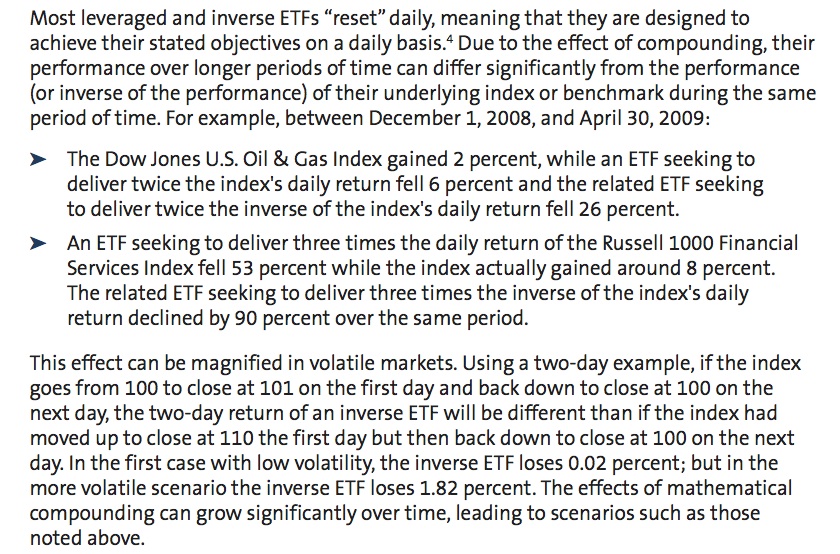SInce The Green Firm is currently pursuing a case involving a particularly egregious abuse of non-traditional ETFs, we thought it might be useful to revisit these exotic investment products and explain why they tend to be misunderstood and misused by stock brokers more accustomed to a traditional "buy-and-hold" strategy. Traditional investing principles urge brokers to "buy low and sell high." Often this means holding onto a specific financial product or stock for a long period of time while waiting for it to arrive at its "true," projected, or peak value, at which point the product is sold before it has a chance to decline. Generally, this type of traditional "value" investing is stable, low risk and low return; it also happens to be suitable for customers with a low-risk tolerance. Non-traditional ETFs, on the other, are complex, high-risk financial products that are designed to perform radically differently. According to FINRA's website, leveraged and inverse ETFs "commonly represent an interest in a portfolio of securities that track an underlying benchmark or index [not the stock market as a whole]. A leveraged ETF generally seeks to deliver multiples of the daily performance of the index or benchmark that it tracks. An inverse ETF generally seeks to deliver the opposite of the daily performance of the index or benchmark that it tracks. Inverse ETFs often are marketed as a way for investors to profit from, or at least hedge their exposure to, downward-moving markets. Some ETFs are both inverse and leveraged, meaning that they seek a return that is a multiple of the inverse performance of the underlying index." One should note that inverse ETFs are particularly tricky, since they are hedging instruments, and thus are intended to perform well in volatile markets. While a financial advisor may describe these non-traditional ETFs as a product that would be suitable in a down market, given the fact that these products "reset" daily (meaning they are designed to meet their objectives on a daily basis), even in a declining market these non-traditional ETFs should not be held for longer than one trading session. Here are some helpful examples from FINRA's Regulatory Notice 09-31:
Many an unfortunate customer has lost money due to an uninformed or negligent broker keeping them invested in leveraged and inverse ETFs inappropriately. We have found in our cases that oftentimes the individual financial advisor does not understand the nature or use of non-traditional ETFs, and so are forced to look at the firm they work for in seeking an answer to the question of why they are investing customers in products they themselves have no grasp of. In many cases, branch managers and even the brokerage firms are not nearly familiar enough with these complex products. Clearly, ETFs can be counterintuitive and risky financial products that are not suitable for every investor, nor understood or properly used by every financial advisor or firm.
If you or someone you know has lost money as a result of improper use of non-traditional ETFs, please contact us.

